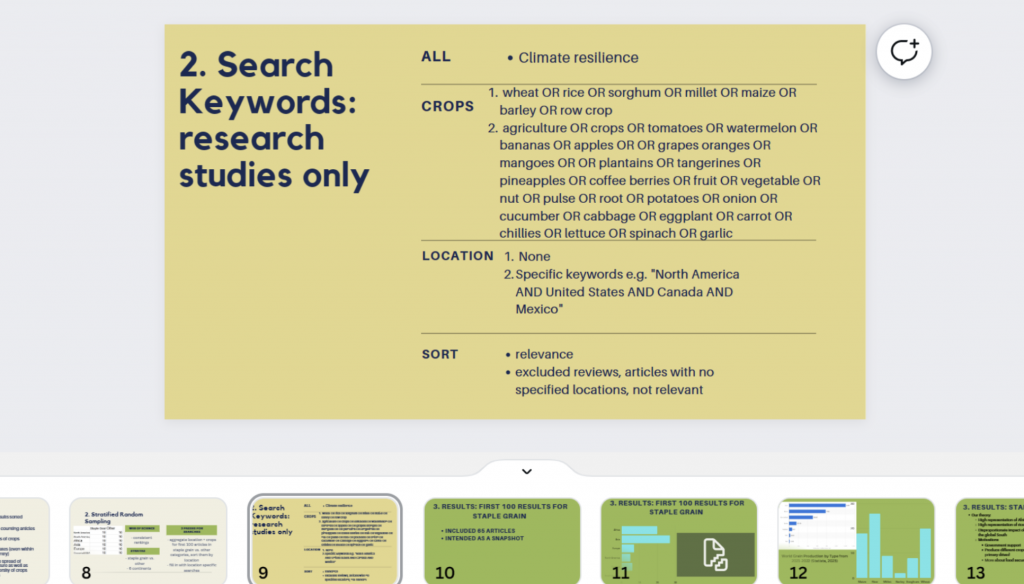Social Impact Internships: Katrina Li (’26)
Hi everyone! My name is Katrina, and I’m a freshman studying physics, with various other interests including policy and climate change solutions. This IAP, I had the opportunity to intern at the World Wildlife Fund’s Markets Institute as a climate resilience intern.
My internship centered around the social issue of climate change. The World Wildlife Fund is an NGO that works on initiatives relating people, planet, and species across a variety of fields including public policy, science, business, and conservation efforts. They work on a variety of projects and initiatives that contribute in the fight against climate change; some examples at the Markets Institute include The Next California and seaweed farming (read more at Markets Institute: Change at the speed of life | Pages | WWF (worldwildlife.org)).
My work specifically centered around the idea of climate resilient agriculture. With changing temperatures, precipitation, and type & frequency of extreme weather events all around the world, questions about the resilience of agriculture arise. How does the resilience of different crops change with climate change? What crops should be planted at what locations to maximize resilience? To answer these questions, it’s important to review the research field of climate resilience and agriculture—to ask oneself what crops are being studied, where, and how. Thus, my internship focus was designing a method to search for current academic literature in agricultural climate resilience with stratified random sampling, as well as reviewing academic papers focusing on indicators for climate resilience. The goal was to get snapshots of what the current field looks like.

I learned so much from this experience about climate resilience and agriculture. First, the variety of indicators used across the different research studies were so diverse, covering ecological, economic, and social indicators; some examples include crop yield, soil fertility, net income, and livelihood. The variety of indicators highlights the complex connections and intersections of fields embraced by the idea of climate resilience, ranging from ecological conditions measured with scientific tests to surveys of farmers about their perceived connection to their community. Second, many research papers I read studied the effectiveness of different methods to increase resilience—some that stood out to me included organic agriculture, and various methods to increase biodiversity in the agro-ecosystem. It was super interesting to read about the connections that the field of climate resilience has with ecology, economy, and farming communities all around the world.
With difficult questions that must be contextualized by crop, location, culture, and a variety of other factors, it’s critical to remember that the idea of climate resilience is intrinsically linked to the idea of community—from communities of farmers that collectively share knowledge about sustainable agricultural practices, to relationships built between researchers and farmers. Finding ways to build climate resilience requires extensive communication between all different types of people involved in sustainability, resilience, and agriculture. In this way, deliberative and reflective dialogue is an important avenue for social change—in order to create a cohesive picture for the current status of climate resilience in agriculture as well as to find solutions effective for different farms, it is important to learn about the particular qualities unique to farms across the world.
Climate resilience is a field that establishes and requires connections across many disciplines, and there is still so much to be done. I hope to continue in learning and helping create change in this field in the future!
Tags: Social Impact Internships, Social Impact Internships IAP 2023
